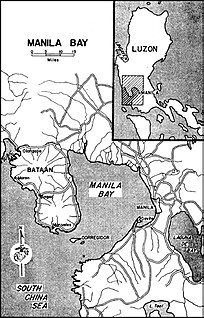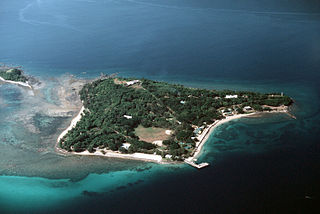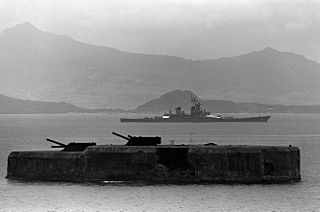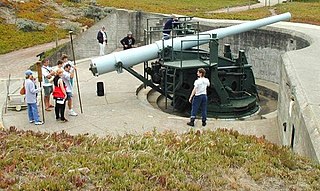| Samuel Meyers Mills Jr. | |
|---|---|
| Born | December 15, 1842 Pottersville, Pennsylvania |
| Died | September 8, 1907 (aged 64) Cottage City, Prince George's County, Maryland |
| Service/ | United States Army |
| Rank | Brigadier General |
| Commands held | Chief of Artillery |
Brigadier General Samuel Myers Mills Jr., (born December 15, 1842, in Pottersville, Pennsylvania, and died September 8, 1907, in Cottage City, Prince George's County, Maryland) [1] served as the United States Army's chief of artillery from 1905 to 1906. He was the great-grandson of William Mills, a soldier in the American Revolution who enlisted in January 1776 and served seven years in Captain Caleb North's Company under Colonel Anthony Wayne. [2] He was Chief of Artillery from 20 June 1905 until 2 October 1906.

Pennsylvania, officially the Commonwealth of Pennsylvania, is a state located in the northeastern and Mid-Atlantic regions of the United States. The Appalachian Mountains run through its middle. The Commonwealth is bordered by Delaware to the southeast, Maryland to the south, West Virginia to the southwest, Ohio to the west, Lake Erie and the Canadian province of Ontario to the northwest, New York to the north, and New Jersey to the east.

Prince George's County is a county in the U.S. state of Maryland, bordering the eastern portion of Washington, D.C. As of the 2010 U.S. Census, the population was 863,420, making it the second-most populous county in Maryland, behind only Montgomery County. Its county seat is Upper Marlboro. It is one of the richest African American-majority counties in the United States, with five of its communities identified in a 2015 top ten list.

The United States Army (USA) is the land warfare service branch of the United States Armed Forces. It is one of the seven uniformed services of the United States, and is designated as the Army of the United States in the United States Constitution. As the oldest and most senior branch of the U.S. military in order of precedence, the modern U.S. Army has its roots in the Continental Army, which was formed to fight the American Revolutionary War (1775–1783)—before the United States of America was established as a country. After the Revolutionary War, the Congress of the Confederation created the United States Army on 3 June 1784 to replace the disbanded Continental Army. The United States Army considers itself descended from the Continental Army, and dates its institutional inception from the origin of that armed force in 1775.
The fortification on Corregidor Island, the Philippines, was designated a United States Military Reservation in 1907 and named Fort Mills in Brigadier General Mills's honor. Fort Mills, nicknamed "The Rock", was twice the site of heavy fighting during World War II, initially as the site of the Allies' last defense of the Philippines on May 2, 1942, after their defeat at Bataan, and subsequently during the Allied liberation of the Philippines under Gen. Douglas MacArthur in February 1945. [3]

The Philippines, officially the Republic of the Philippines, is an archipelagic country in Southeast Asia. Situated in the western Pacific Ocean, it consists of about 7,641 islands that are categorized broadly under three main geographical divisions from north to south: Luzon, Visayas, and Mindanao. The capital city of the Philippines is Manila and the most populous city is Quezon City, both part of Metro Manila. Bounded by the South China Sea on the west, the Philippine Sea on the east and the Celebes Sea on the southwest, the Philippines shares maritime borders with Taiwan to the north, Vietnam to the west, Palau to the east, and Malaysia and Indonesia to the south.

Fort Mills was the location of US Major General George F. Moore's headquarters for the Philippine Department's Harbor Defenses of Manila and Subic Bays in early World War II, and was the largest seacoast fort in the Philippines. Most of this Coast Artillery Corps fort was built 1904–1910 by the United States Army Corps of Engineers. The fort was named for Brigadier General Samuel Meyers Mills Jr., Chief of Artillery 1905–1906. It was the primary location of the Battle of Corregidor in the Japanese invasion of the Philippines in 1941–42, and of the recapture of Corregidor in February 1945, both in World War II.

World War II, also known as the Second World War, was a global war that lasted from 1939 to 1945. The vast majority of the world's countries—including all the great powers—eventually formed two opposing military alliances: the Allies and the Axis. A state of total war emerged, directly involving more than 100 million people from over 30 countries. The major participants threw their entire economic, industrial, and scientific capabilities behind the war effort, blurring the distinction between civilian and military resources. World War II was the deadliest conflict in human history, marked by 50 to 85 million fatalities, most of whom were civilians in the Soviet Union and China. It included massacres, the genocide of the Holocaust, strategic bombing, premeditated death from starvation and disease, and the only use of nuclear weapons in war.
In Mills's honor, the USAMP General Samuel M. Mills, Jr., a U.S. Army mine planter ship, was built in 1908-09 by the New York Shipbuilding Company of Camden, New Jersey, for the Submarine Mine Service of the United States Army Coast Artillery Corps, a division of the United States Army, Office of the Quartermaster General. After being retrofitted as a cable ship, she was renamed the USCGC Pequot and during World War II laid cable along the eastern seaboard of the United States, bolstering US defenses. [4]
The New York Shipbuilding Corporation was an American shipbuilding company that operated from 1899 to 1968, ultimately completing more than 500 vessels for the U.S. Navy, the United States Merchant Marine, the United States Coast Guard, and other maritime concerns. At its peak during World War II, NYSB was the largest and most productive shipyard in the world. Its best-known vessels include the destroyer USS Reuben James (DD-245), the cruiser USS Indianapolis (CA-35), the aircraft carrier USS Kitty Hawk (CV-63), the nuclear-powered cargo ship NS Savannah, and a quartet of cargo-passenger liners nicknamed the Four Aces.

Camden is a city and the county seat of Camden County, New Jersey, United States. Camden is located directly across the Delaware River from Philadelphia, Pennsylvania. At the 2010 U.S. Census, the city had a population of 77,344. Camden is the 12th most populous municipality in New Jersey. The city was incorporated on February 13, 1828. Camden has been the county seat of Camden County since the county was formed on March 13, 1844. The city derives its name from Charles Pratt, 1st Earl Camden. Camden is made up of over twenty different neighborhoods.

The U.S. Army Coast Artillery Corps (CAC) was an administrative corps responsible for coastal, harbor, and anti-aircraft defense of the United States between 1901 and 1950. The CAC also operated heavy and railway artillery during World War I.











